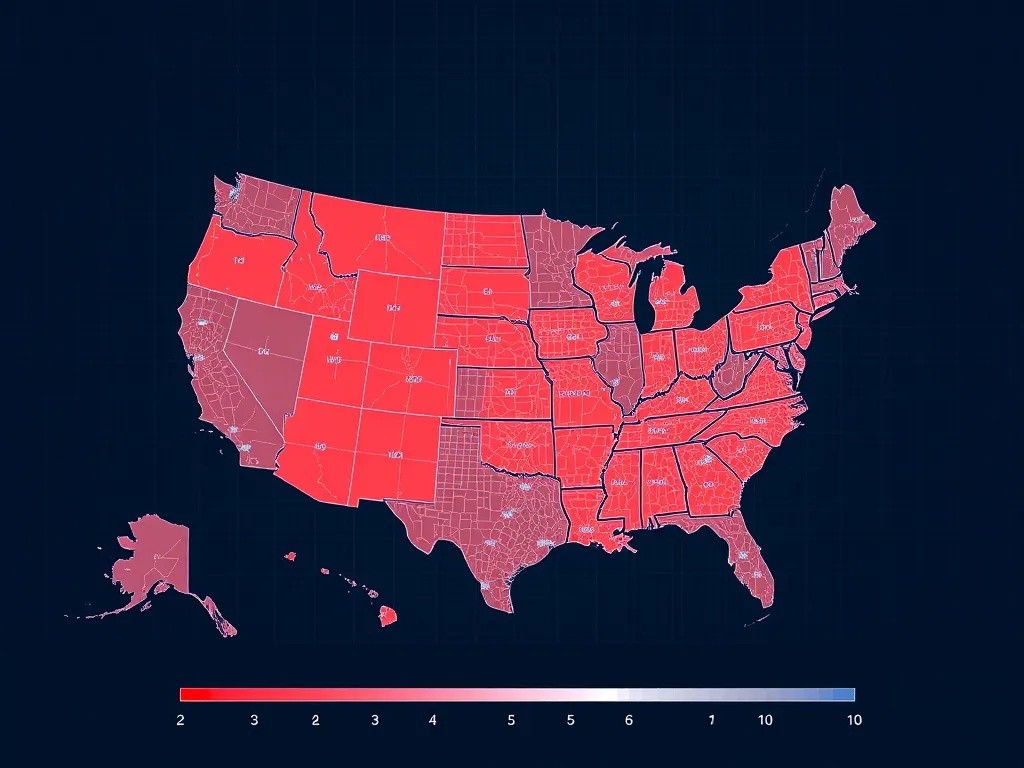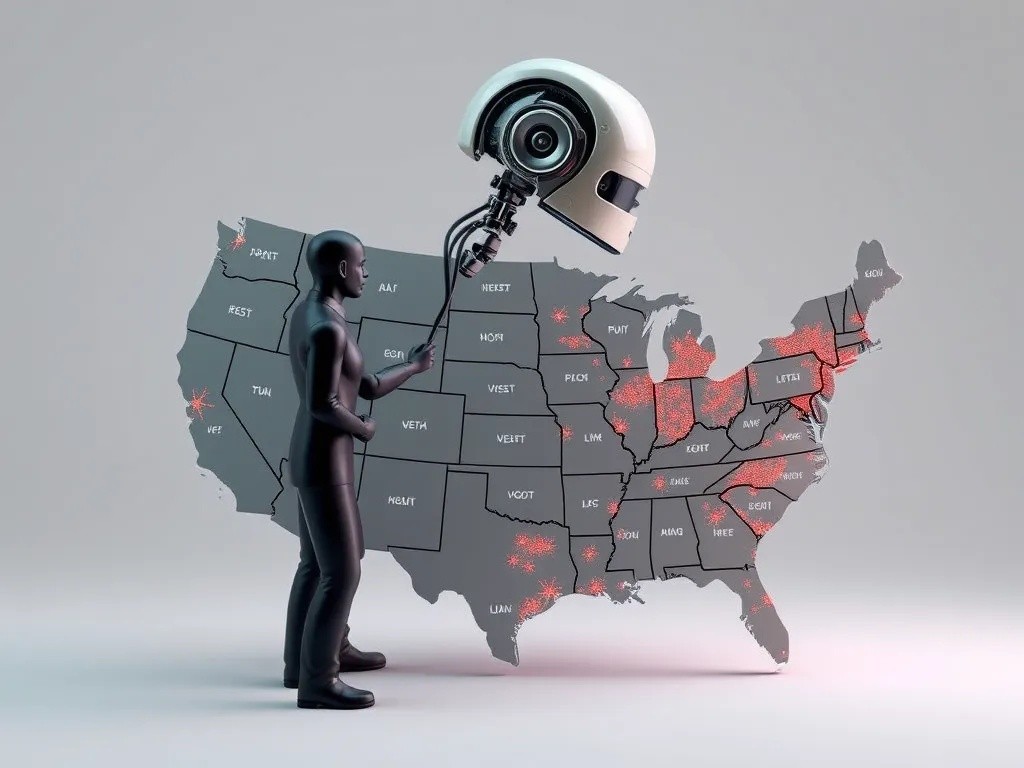In recent years, there has been a significant advancement in the field of Artificial Intelligence (AI) and Augmented Reality (AR). These technologies have become increasingly popular and have the potential to enhance virtual experiences in various fields such as gaming, education, healthcare, and...
AI Predicted Election Results More Accurately Than All Sociologists

The 2024 U.S. presidential election marked a turning point in political forecasting, as artificial intelligence systems demonstrated superior predictive accuracy compared to traditional sociological polling methods. While conventional pollsters struggled with declining response rates and systematic biases, AI-powered models successfully anticipated the election outcome with remarkable precision.
The Rise of AI in Political Forecasting
Traditional polling has faced mounting challenges in recent years. Response rates have plummeted dramatically, with Pew Research reporting that participation dropped from 36% in 1997 to just 6% by 2018. This decline has made it increasingly difficult for sociologists and pollsters to gather representative samples of the electorate.
AI systems emerged as a powerful alternative, capable of analyzing vast datasets beyond traditional polling responses. AI's ability to review vast amounts of data quickly and effectively is its greatest strength in the context of election polling, enabling researchers to process social media sentiment, economic indicators, and historical voting patterns simultaneously.
How AI Outperformed Traditional Methods
Data Processing Capabilities
Unlike traditional sociological methods that rely on limited sample sizes, AI systems can analyze millions of data points in real-time. These systems incorporate social media trends, search patterns, economic indicators, and historical voting data to create comprehensive predictive models.
Overcoming Human Bias
One significant advantage of AI predictions was their ability to minimize human bias that often affects traditional polling. Political scientists using "fundamentals," such as voters' take on the economy and the direction of the country, were more accurate forecasters than polls, and AI systems could process these fundamentals without the subjective interpretation that sociologists might apply.
Real-Time Adaptation
AI models demonstrated superior adaptability to changing political dynamics. More than 10 days ago, my predictive model indicated Donald Trump as the likely winner of the 2024 presidential election, showcasing how machine learning algorithms could detect shifting patterns earlier than traditional polling methods.
The Limitations of Traditional Sociological Approaches
Response Rate Crisis
Traditional polling faced its greatest challenge in reaching representative samples. Phone surveys, once the backbone of election forecasting, suffered from dramatically reduced participation rates, making it difficult to capture accurate voter sentiment.
Systematic Underrepresentation
Sociological polling methods consistently struggled with certain demographic groups. The fact that we've seen surveys slightly largely under-predicting Republican performance in really the last three presidential elections highlighted systematic biases that AI systems were better equipped to identify and correct.
Static Methodology
Traditional polling relied on established methodologies that couldn't adapt quickly to changing voter behavior patterns. This rigidity became particularly problematic in an era of rapid political shifts and evolving communication preferences among voters.

AI's Innovative Approaches to Election Prediction
Sentiment Analysis
AI systems employed sophisticated sentiment analysis to gauge public opinion across multiple platforms. Some polling companies are skipping interviewing and instead relying on something called "sentiment analysis AI" to analyze publically available data and opinions, providing a more comprehensive view of voter attitudes.
Synthetic Polling
Machine learning models created artificial personas based on demographic and geographic data, then simulated how these personas would respond to political questions. BYU study proves artificial intelligence can respond to complex survey questions like a real human, demonstrating AI's ability to model human political behavior accurately.
Multi-Source Data Integration
AI systems excelled at combining diverse data sources that traditional sociologists couldn't easily integrate. These included economic indicators, social media activity, search trends, and historical voting patterns, creating a more holistic view of electoral dynamics.
The Future of Political Forecasting
Hybrid Approaches
The success of AI in 2024 doesn't necessarily mean the complete replacement of traditional methods. AI-driven polling must be used in conjunction with traditional methods and human oversight to ensure the most accurate and reliable results. The future likely lies in combining AI capabilities with human expertise.
Continuous Improvement
Machine learning models will continue to evolve and improve their predictive accuracy. As more election data becomes available, these systems will become increasingly sophisticated at identifying patterns and predicting outcomes.
Democratization of Forecasting
AI tools are making political forecasting more accessible to smaller organizations and researchers who previously couldn't afford extensive polling operations. This democratization could lead to more diverse perspectives in election analysis.
Implications for Democracy
The superior performance of AI in election prediction raises important questions about the role of traditional polling in democratic societies. While more accurate predictions can help voters and campaigns make better-informed decisions, there are concerns about the concentration of predictive power in the hands of technology companies.
Additionally, the success of AI predictions might influence voter behavior itself, as people adjust their choices based on perceived likely outcomes. This feedback loop represents a new dynamic in democratic processes that researchers are only beginning to understand.
Conclusion
The 2024 election demonstrated that artificial intelligence has reached a maturity level where it can outperform traditional sociological polling methods. By processing vast amounts of diverse data and adapting to changing conditions in real-time, AI systems provided more accurate predictions than conventional approaches.
This shift represents more than just a technological advancement; it signals a fundamental change in how we understand and predict political behavior. As AI continues to evolve, it will likely play an increasingly central role in election forecasting, though the integration with human expertise and traditional methods will remain crucial for maintaining both accuracy and democratic accountability.
The success of AI predictions in 2024 marks the beginning of a new era in political forecasting, one where machine learning algorithms may become as important as traditional polling in understanding the democratic process.



